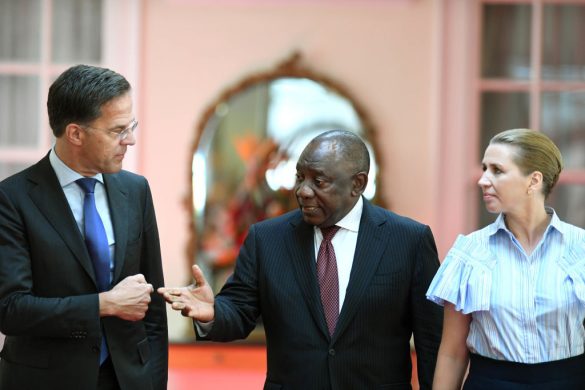Det virkede så let at få penge til alt muligt – men nu kommer regningen i form af tilbageholdelse af dele af lønnen og gældsslaveri i formentlig mange år frem – blogindlæg fra Sydafrika om virkningerne af omfattende mikrolån til minearbejdere.
Af Franz Wild, Mike Cohen & Renee Bonorchis
In 2008, James Ntseane borrowed 8.000 rand (931 US dollar) from African Bank Investments Ltd. (ABL) to pay for his grandmother’s funeral in the South African village of Ganyesa.
It seemed so easy that the platinum miner took out two more loans, worth 10.000 rand, for a sofa and house extension over the following six months.
Four years later, he owes at least 30.515 rand, according to text messages he gets from African Bank, South Africa’s biggest provider of unsecured loans.
To make the payments, 1.700 rand is taken off his monthly salary of about 12.600 rand by his employer under a court-imposed garnishee (beslaglæggelse /indeholdelse) order and given to the lender. He does not know how much interest (rente) he is paying.
“Even if they tell me 14 percent, I don’t know how much that is,” said Ntseane, 41, who works nights operating a rock- hauling machine almost a mile under the surface at Impala Platinum Holdings Ltd. (IMP)’s mine north of Johannesburg.
“They are taking too much money from us. They don’t even care how much you earn,” added he.
Ntseane is one of more than 9 million South Africans with a blemished credit record, their ranks swollen by an unsecured- loan boom driven by lenders including African Bank and counterparts Capitec Bank Holdings Ltd. (CPI) and Bayport Ltd.
Rising indebtedness from interest rates of as much as 80 percent a year may have contributed to a series of strikes that led to the worst mining industry violence since apartheid ended in 1994, according to the government.
“One of the contributing factors to all of these strikes has been this surge in unsecured lending,” said Mike Schussler, chief economist at Economists.co.za, a research group, in an interview from Johannesburg, adding: “We are very close to a peak.”
Worrying Rise
In November, South Africa’s National Treasury and the Banking Association of South Africa said they had agreed to tighten lending rules after the number of people with bad credit records rose to a record, threatening to trap poor families in a “debt spiral.”
Finance Minister Pravin Gordhan called the rise in unsecured lending “worrying” a week earlier.
The value of consumer loans not backed by assets (værdier hos låntageren) surged 39 percent in the year through September to 140 billion rand, according to the Johannesburg-based National Credit Regulator.
The loans accounted for 10 percent of consumer credit at the end of September, up from 8 percent a year earlier.
“You have got people who are getting more and more over- indebted,” Nomsa Motshegare, the credit regulator’s chief executive officer, told reporters in Pretoria in October.
“At the same time you have got more and more money being extended to these people”, noted he.
Unsecured Bubble
Læs videre på
http://worldinstruggle.blogspot.dk/2013/01/south-africa-modern-debt-slavery-im.html














